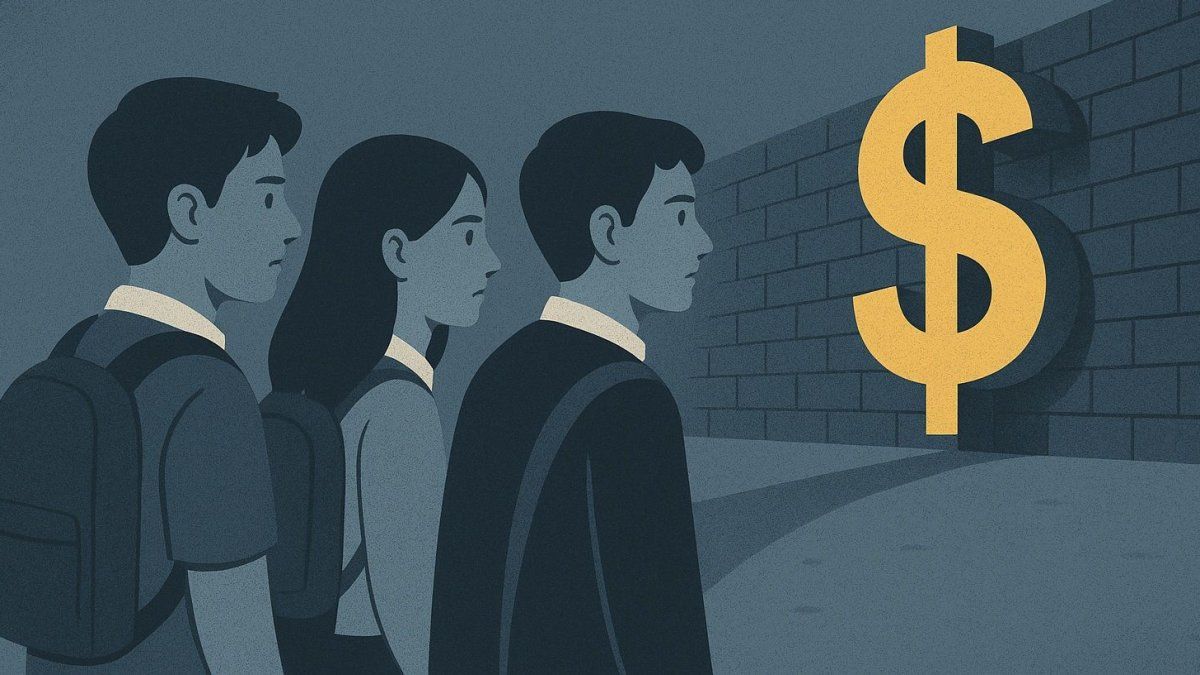Unequal assets
Half of the German population has hardly any money on the side
Copy the current link
If you have little money, it is also difficult to build up a fortune. That sounds banal. But a new study now puts the disadvantage with concrete data.
People with little fortune are structurally disadvantage when investing and can hardly overcome them on their own. This is shown by a study by financial turnaround research, funded by the union-related Hans Böckler Foundation. The investigation was noted at the end of January.
“Different returns and, above all, the lower starting capital of low-wealth people ensure that the trench between the asset groups continues to grow,” says Moritz Czygan, co-author of the study and speaker at the financial turnaround, a non-profit subsidiary of the civil movement financial change.
If you have only a few thousand euros, you need an iron reserve, for example if the washing machine broke, said Britta Langenberg, head of the consumer protection area at the financial turnaround. Investments in stocks would hardly be possible for you.
Social trenches in Germany gap apart
For the study in cooperation with the Institute for Socio-Economics at the University of Duisburg-Essen, the assets of adults were raised and analyzed by survey based on the socio-economic panels from 2019: The first group was the low-wage half of the population with a gross assets of on average 6000 euros; Debts were not taken into account. This was followed by the wealthier assets with a share of 40 percent and an average gross assets of 149,000 euros. The upper 10 percent accounted for 925,000 euros on average.
Average asset portfolios were formed for the groups and linked to long-term return data from the Bundesbank. From this, a poverty disadvantage was calculated: According to the study, it was 525 euros in 2024. He puts how much money escapes the approximately 35 million adults from the lower half of the property compared to the middle of the property. 280 euros of this arise because the portfolios of low -wealth people are reduced in return. In addition, there are higher product costs because the costs for a checking account or life insurance are more noticeable in the event of lower assets.
Frequent property of property often real estate
By far the most important possession of the low -wage half is your own car, but which loses value over the years, the authors wrote. In addition, there would be secure, but yields of returns such as savings deposits or life insurance.
In contrast, in people from the middle of the property, their own property accounts for the majority of the assets – and owners would have benefited from the long real estate boom. The middle of the property therefore comes to an average of 5.9 percent return per year, for low wealth, possessions grew only by 1.9 percent.
Half of the population, which is low in wealth, therefore includes a particularly large number of East Germans, people with a migration background and single parents. The perspective of people with little money is not a role in public discussion, Langenberg criticized. “You don’t talk about money in Germany, certainly not about little money.” Better consumer protection and more financial education are necessary.
Dpa
MKB
Source: Stern




